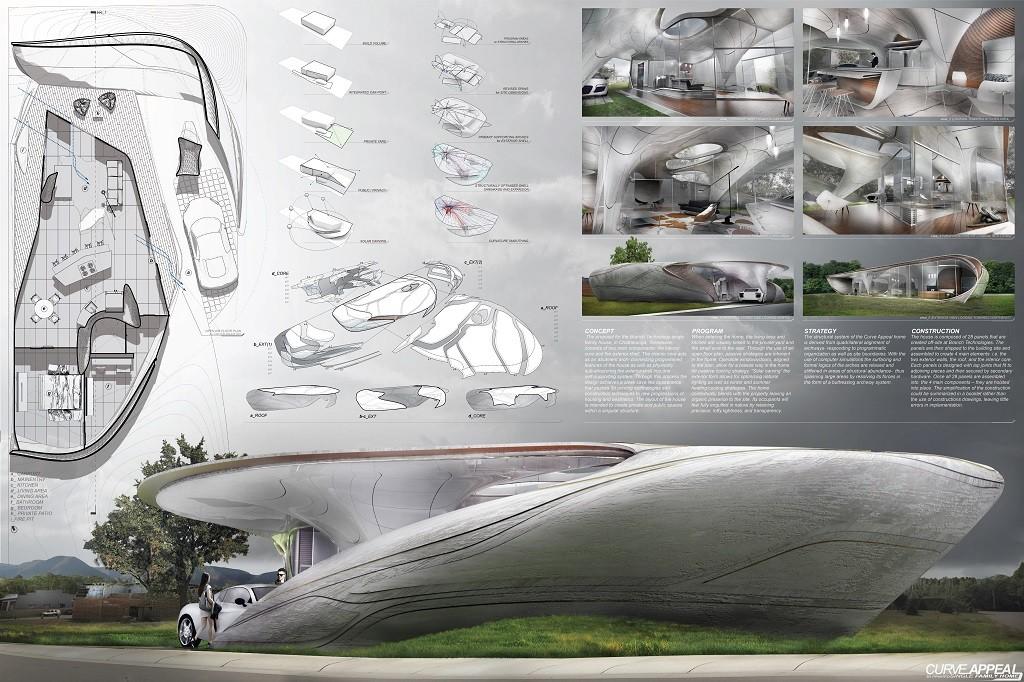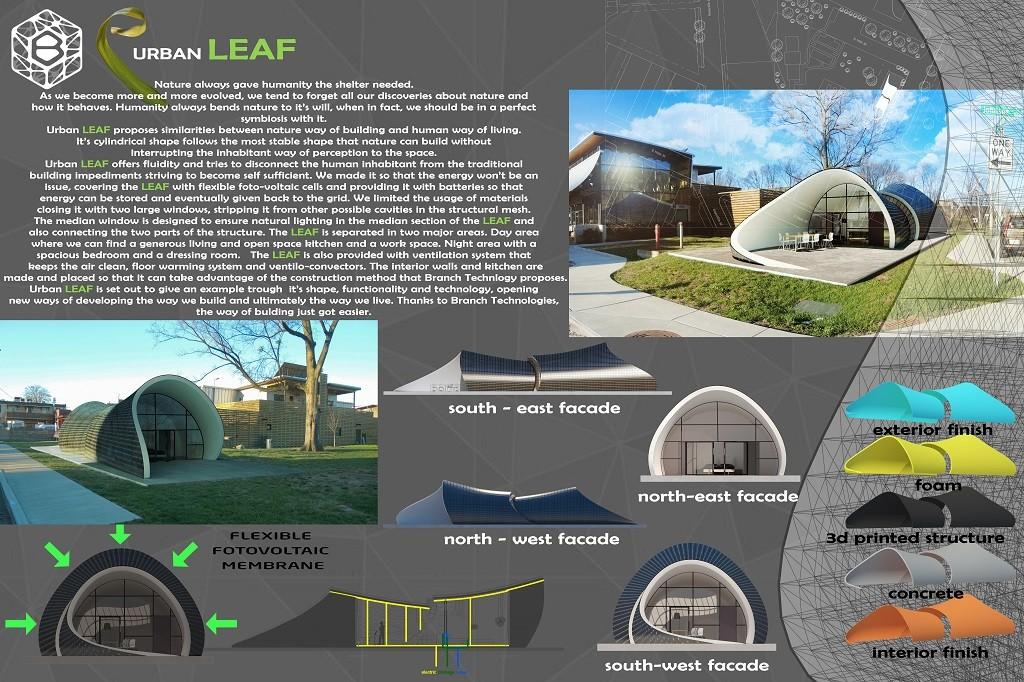 Last July, Chattanooga startup Branch Technology launched a competition challenging participants to use the company’s patented Cellular Fabrication technology to design a 3D printed single-family home that “rethinks traditional aesthetics, ergonomics, construction, building systems, and structure from the bottom up.” The Freeform Home Design Challenge was a long-running one – it obviously takes more than a bit of time to design a house, even a single-level one. However, the competition drew to a close at the end of March, and now Branch Technology has finally announced the results. The three winning designs encompass everything Branch Technology stands for – not only the disruption of traditional building techniques, but high-tech, environmentally friendly, nature-inspired creativity.
Last July, Chattanooga startup Branch Technology launched a competition challenging participants to use the company’s patented Cellular Fabrication technology to design a 3D printed single-family home that “rethinks traditional aesthetics, ergonomics, construction, building systems, and structure from the bottom up.” The Freeform Home Design Challenge was a long-running one – it obviously takes more than a bit of time to design a house, even a single-level one. However, the competition drew to a close at the end of March, and now Branch Technology has finally announced the results. The three winning designs encompass everything Branch Technology stands for – not only the disruption of traditional building techniques, but high-tech, environmentally friendly, nature-inspired creativity.
First place went to WATG Chicago, a 70-year-old design studio with offices located globally. Their design, “Curve Appeal,” is a swooping, low-to-the-ground structure that resembles some sort of natural rock formation, in perfect sync with Branch Technology’s “build like nature” motto. The design team consisted of Daniel Caven, Chris Hurst, Miguel Alvarez, and Brent Watanabe. You can take a look at the 3D representation below:
CURVE APPEAL
by dcaven
on Sketchfab
The Visionary Award, described by Branch Technology as “the proposal that is the most forward looking concept and innovation,” went to “HOME(LESS) + HOUSING” by Yiwei He and Kyle McArdle of the City College of New York. The modular, domelike building earns its “visionary” designation with its use of not only Cellular Fabrication Technology but also solar power and an innovative combination of a wet core and a dry core, for water collection and stack ventilation, respectively. As the project’s name suggests, the team designed the structure with the homeless population in mind.
“HOME(LESS) + HOUSING would also benefit the homeless population in dense urban settings based (on) the lowered costs, easier constructions, and reduced time requirements,” the team states in their design proposal. “Aggregation studies show how this modular system can be arranged to fit different sites at different scales, as numerous products can be manufactured at the same time according to the end user requirements at no additional process cost.”
The People’s Choice Award went to the design with the most votes on the competition site’s online viewing and voting platform. The people chose “Urban LEAF,” designed by Alexandra-Gabriela Dochia and Bogdan Manoliu from Spiru Haret University in Bucharest, Romania. The design, which utilizes photovoltaic cells and solar batteries to use as little energy as possible, actually physically resembles a curled-up leaf.
“Nature always gave humanity the shelter needed,” says the design team. “As we become more and more evolved, we tend to forget all our discoveries about nature and how it behaves. Humanity always bends nature to it’s will, when in fact, we should be in a perfect symbiosis with it. Urban LEAF proposes similarities between nature way of building and human way of living. It’s cylindrical shape follows the most stable shape that nature can build without interrupting the inhabitant way of perception to the space.”
The teams behind Urban LEAF and HOME(LESS) + HOUSING will each receive $1,000, while Curve Appeal’s creators will be awarded $8,000 – in addition to having their design built. As amazing as the pictures are, I can’t wait to see the building in real life. Other entrants – if you’d like to build your design with help from Branch, the company is offering a 20% discount to anyone who submitted an entry to the competition. You can see more on the three winners, along with the rest of the 50 finalists, here. Discuss in the 3D Printed Home Challenge forum over at 3DPB.com.
Subscribe to Our Email Newsletter
Stay up-to-date on all the latest news from the 3D printing industry and receive information and offers from third party vendors.
Print Services
Upload your 3D Models and get them printed quickly and efficiently.
You May Also Like
Heating Up: 3D Systems’ Scott Green Discusses 3D Printing’s Potential in the Data Center Industry
The relentless rise of NVIDIA, the steadily increasing pledges of major private and public investments in national infrastructure projects around the world, and the general cultural obsession with AI have...
3DPOD 260: John Hart on VulcanForms, MIT, Desktop Metal and More
John Hart is a Professor at MIT; he´s also the director of the Laboratory for Manufacturing and Productivity as well as the director of the Center for Advanced Production Technologies....
Etsy Design Rule Change Reduces Selection of 3D Printed Goods
Online marketplace Etsy has implemented a rule change requiring all 3D printed goods on the site to be original designs. The update to the site’s Creativity Standards states, ¨Items produced using...
E-Beam OEM Wayland Additive Partners with USC Racing to 3D Print Titanium Exhaust Collector
Every year, standards organization SAE International holds a competition called Formula SAE, in which students from both undergraduate and graduate programs design, build, and race small formula-style race cars. For...



































